Urban Ecologies
Outdoor Eco-Art Exhibition
On April 22, 2021, Art Park 21 opened its second biennial juried exhibition of outdoor eco-centric artworks with the partnership of the Railyard Park Conservancy and Railyard Art Project. This featured the temporary siting of several works on the Railyard grounds, many of which were the product of inter-disciplinary collaboration. The installations had relevance to the environment of New Mexico and were created by artists from the region. Funding support for this project was provided by the New Mexico Humanities Council and the National Endowment for the Humanities. The exhibition ran through September of 2021.
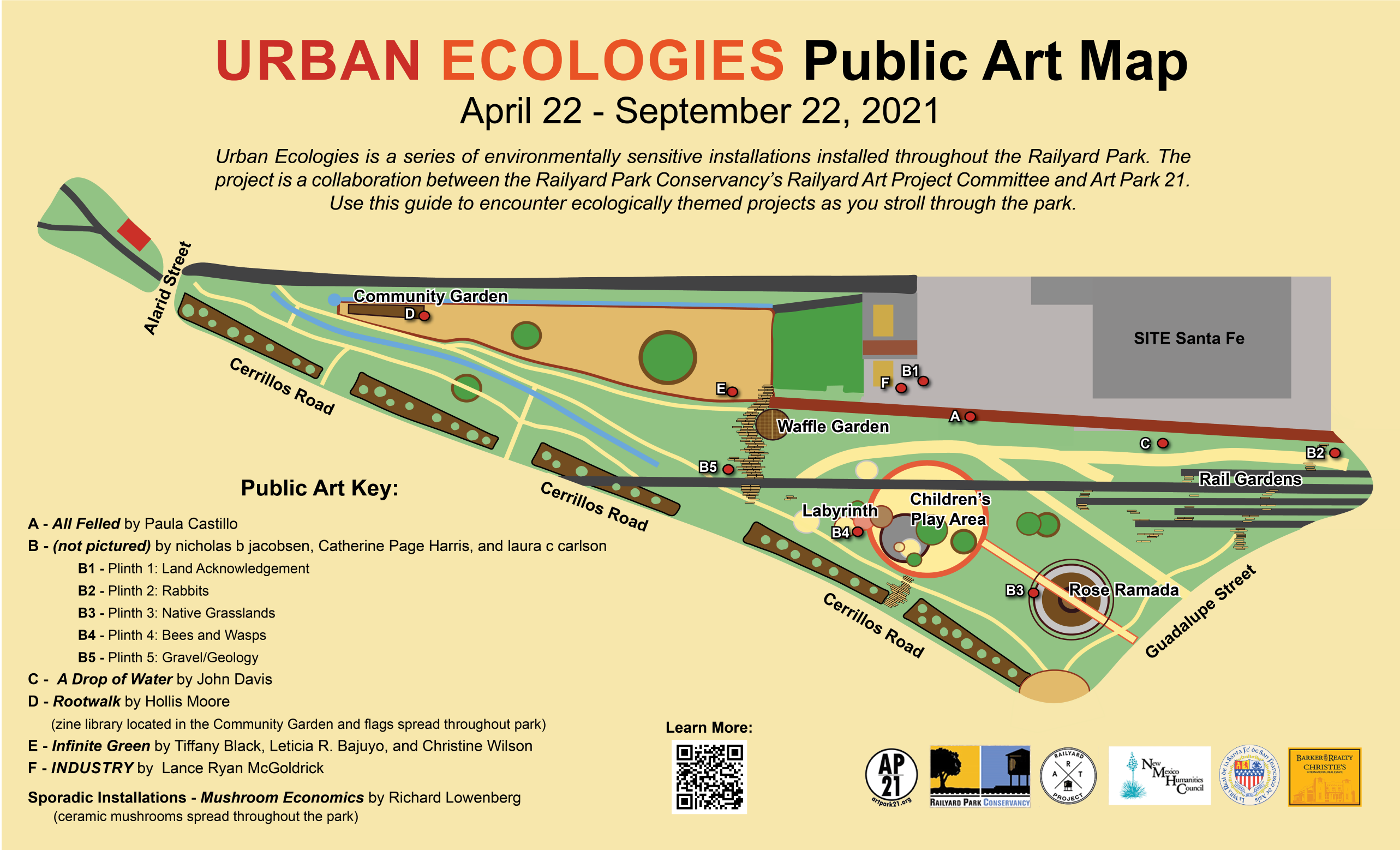
FEATURING
All Felled
By Paula Castillo
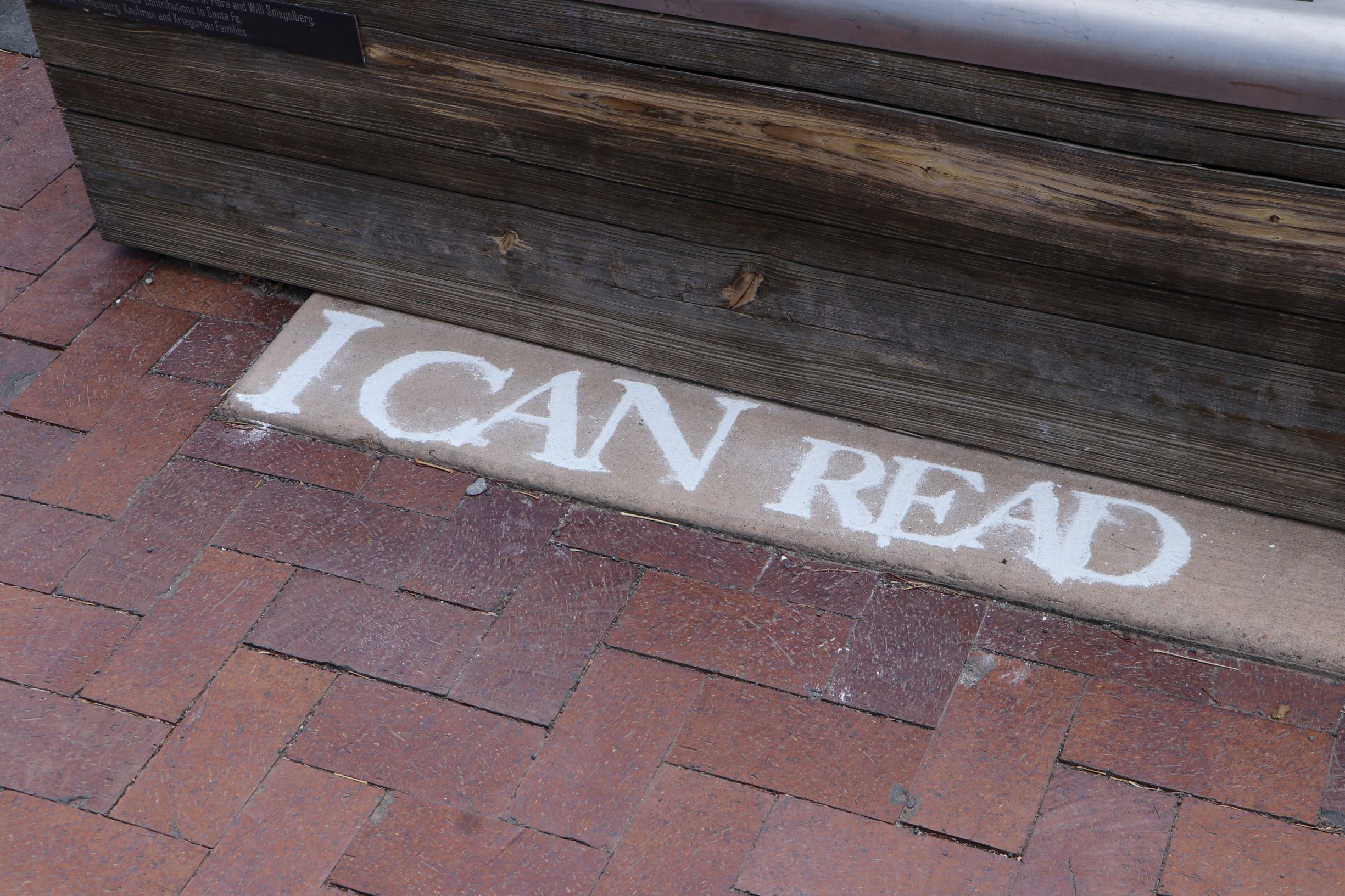


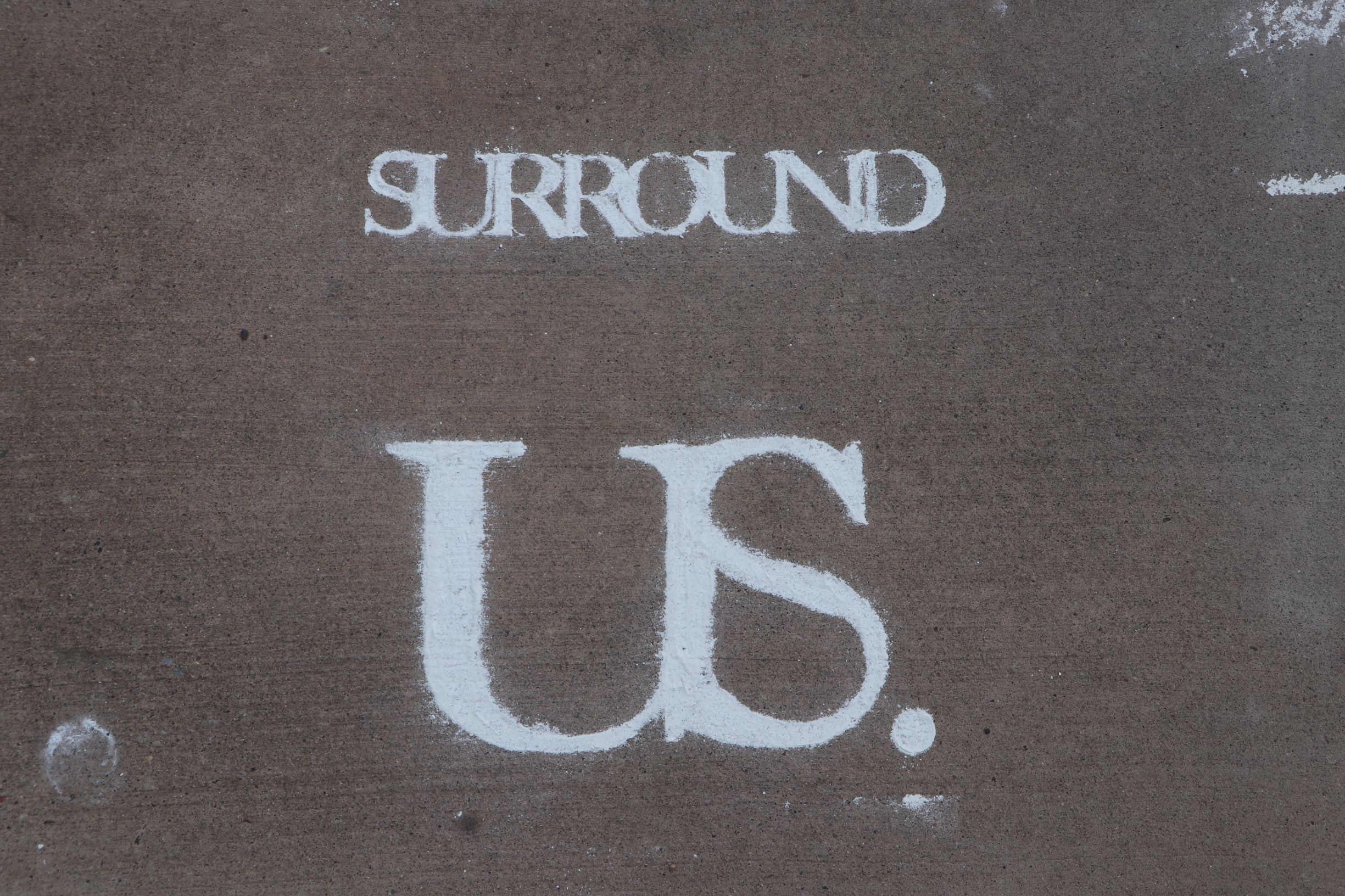
All Felled, a low-tech text piece, reflected the diaspora of the Douglas fir harvested from Jicarita Peak near Peñasco, NM, at the beginning of the 20th century to supply ties to the AT&SF Railroad. The installation consisted of text that was temporarily chalked into the boardwalk with solar-powered glow in collaboration with schoolchildren from New Mexico. The intent was to reflect on the dual concept of identity and territory concerning ecocentrism. It also critiqued the notion that humans are, by our very nature, limited to an anthropocentric understanding of the universe. This intervention actively examined a human ability to develop a perspective beyond a materialist model to increase an intuitive understanding and compassion for all life
Infinite Green
By Leticia R. Bajuyo, Tiffany Black, and Christine Wilson

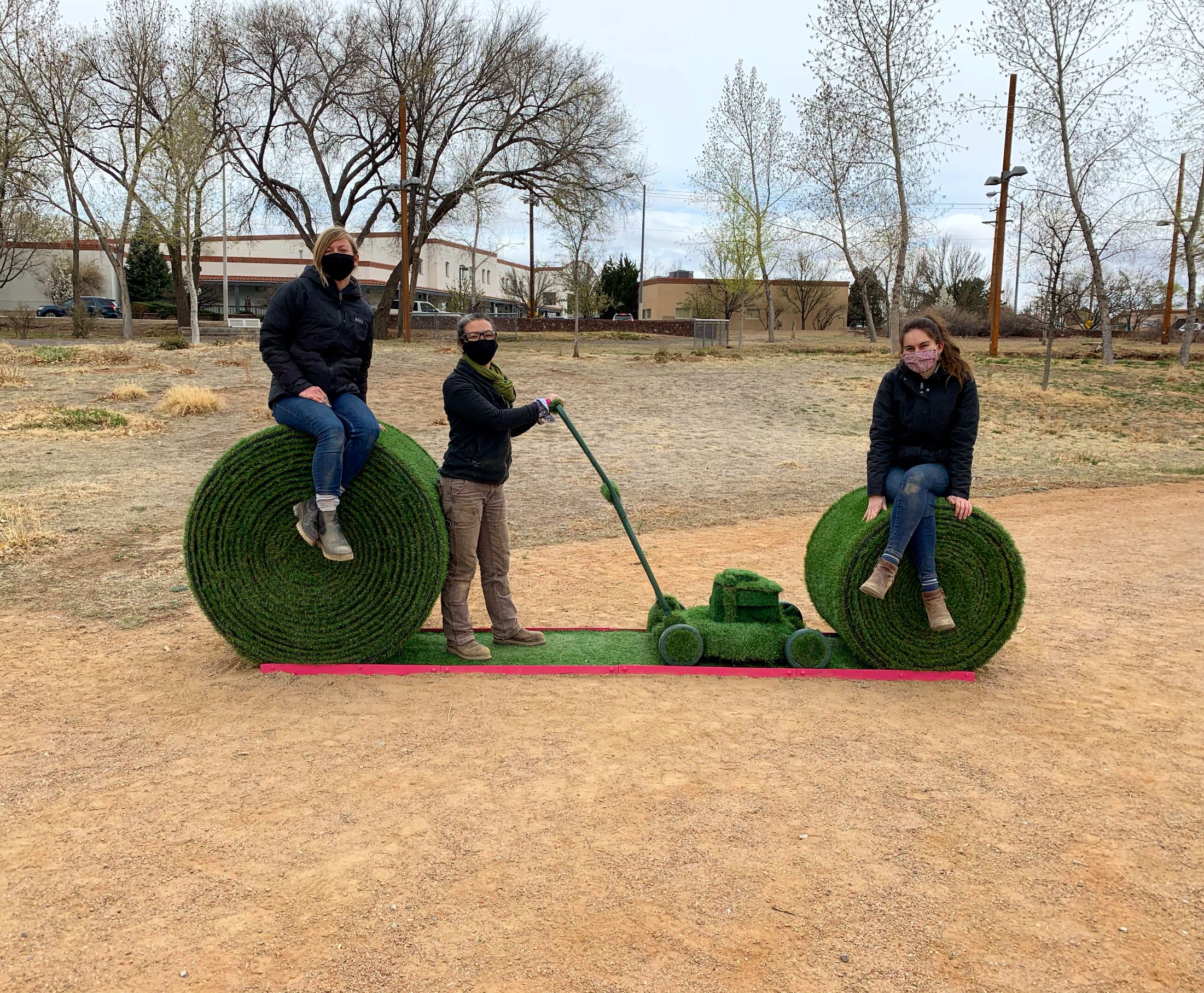
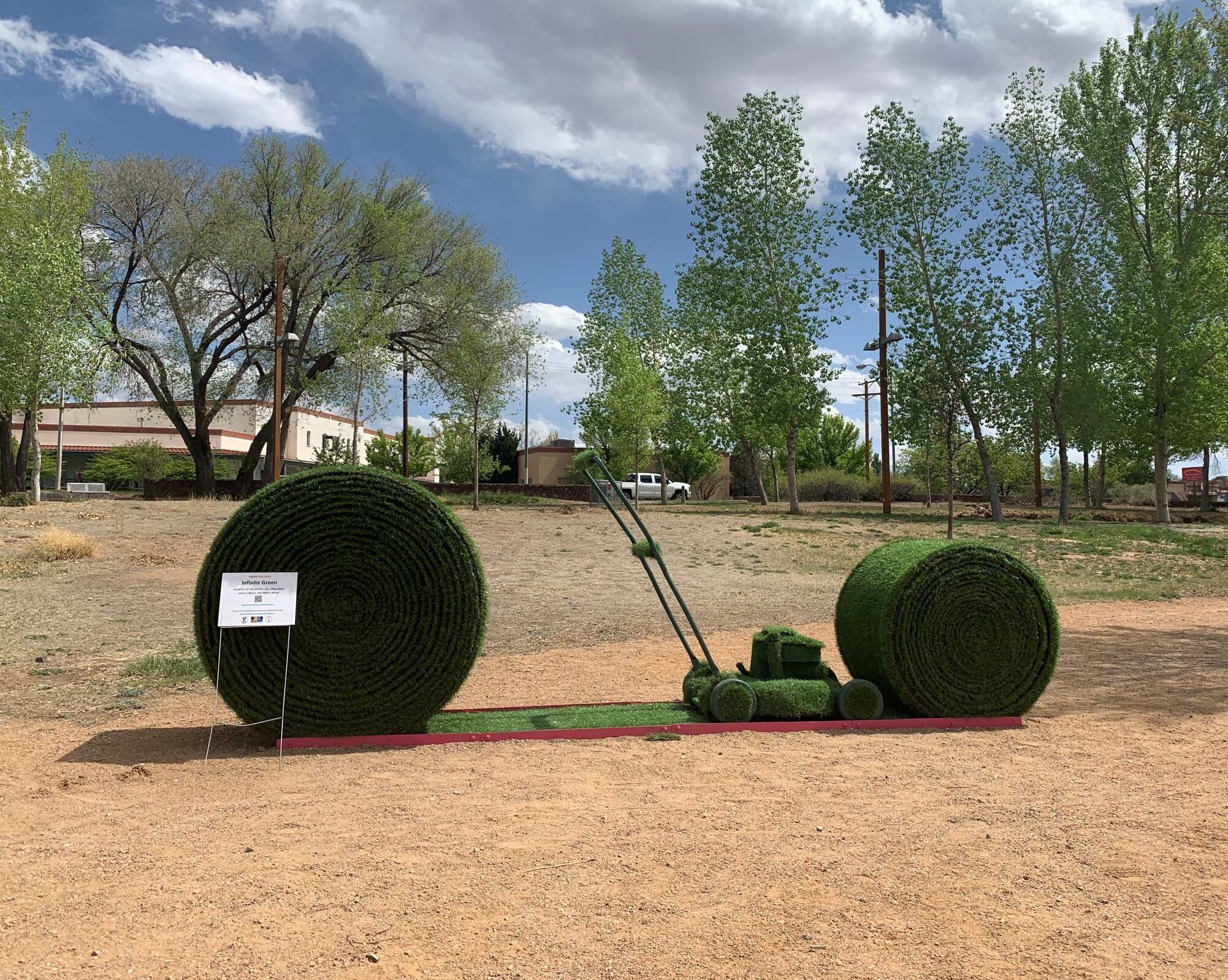
Infinite Green was a sculptural installation created with repurposed artificial grass and a reclaimed push lawn mower. What appeared to be one very long strip of grass coiled into two large rolls, creating an infinite loop of perfectly-manicured green lawn. In the center of the two turf rolls, where the material passed from one roll to the next, sat a well-worn lawnmower, as if positioned on a hamster wheel. The material of artificial grass stirred connotations of idealized versions of natural beauty, and our culture’s tendency to plasticize what we love in order to make its beauty last, manipulating organic materials to make them more durable and impervious to death and decay. Infinite Green evolved from dialogues about what is ultimately sacrificed in an endless quest for the perfect lawn, the perfect home, and the perfect life in pursuit of romanticized versions of the American Dream. Is there a price too high, in financial or natural resources, to achieve picture-perfect curb appeal?
Mushroom Economics
By Richard Lowenberg
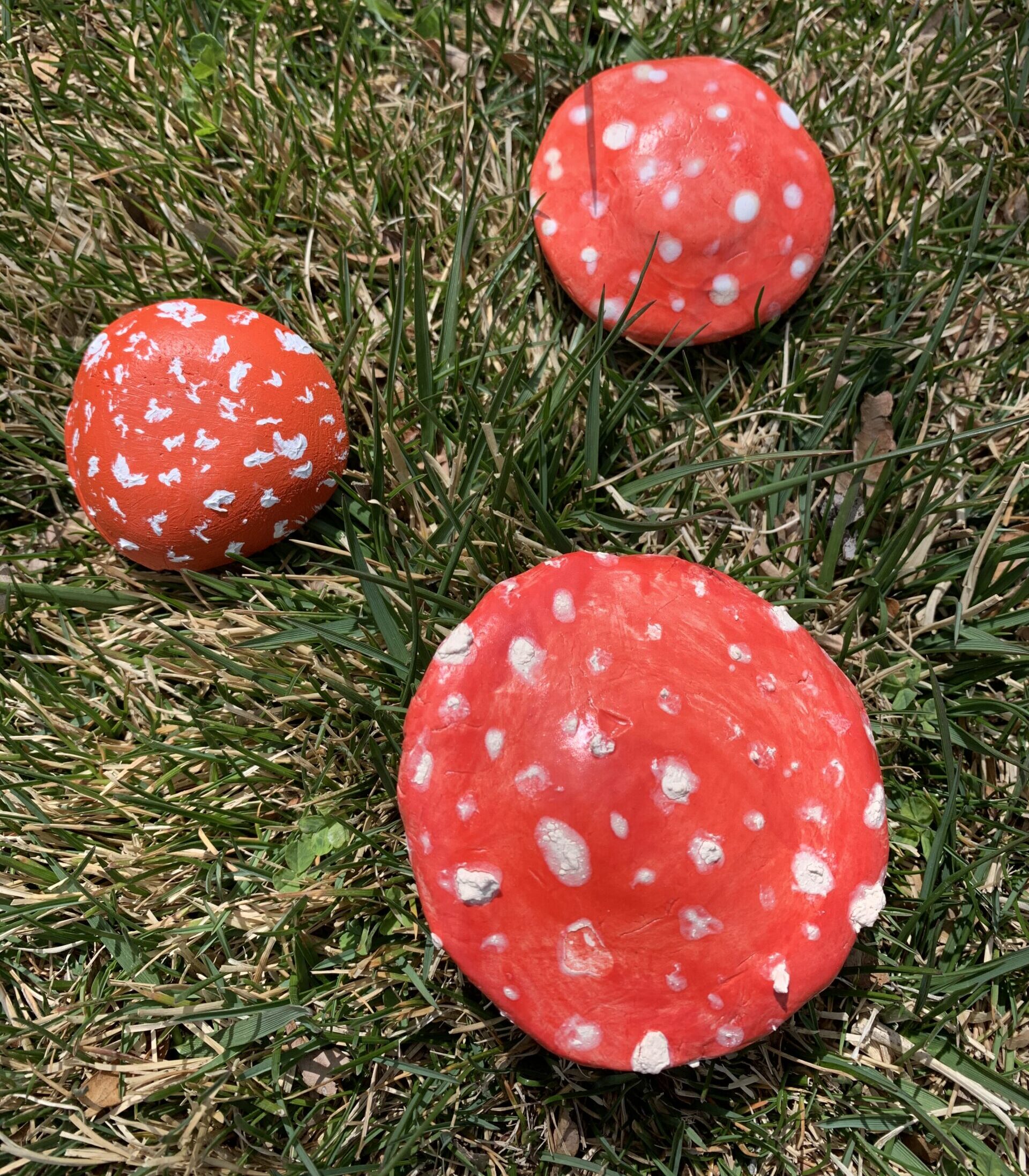
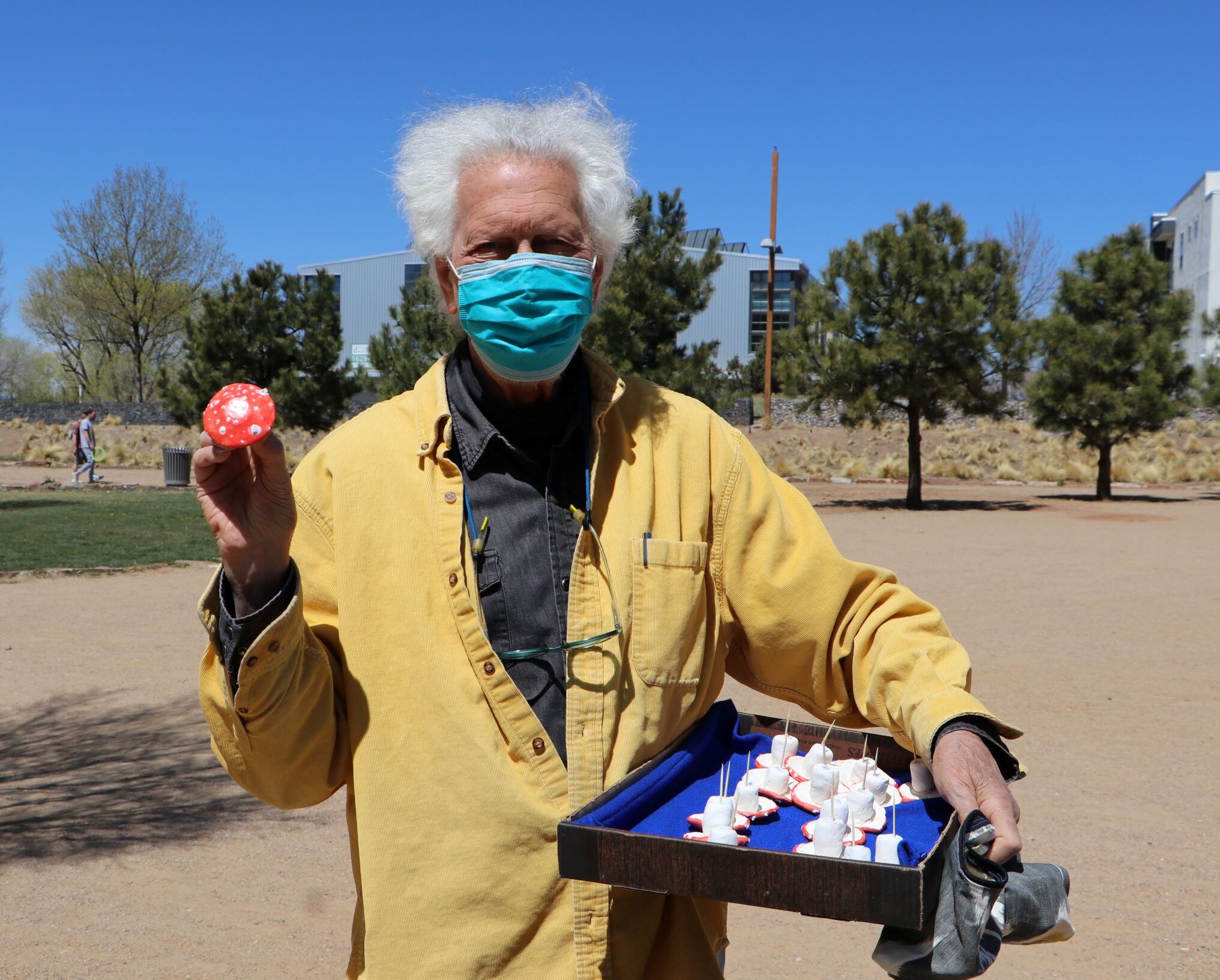
A series of approximately 300 small colorful Amenita-like ceramic mushrooms were sporadically and secretly placed under cover of night around selected Santa Fe Railyard Park grounds. The mushrooms were to be found, foraged and kept by those who encountered them, as a gift. The stems were hollow, containing a removable paper message, asking for locative contact. A project website and interactive map was created to geographically track the mushrooms’ mycorrhizal economic paths, as artful representation of our community’s fungible gift economy. A public “Art + Economics” workshop and discussion also was held, attempting to make visible and visceral, economic understandings and practices for how to balance our local economy, Earth’s economy, and for re-inhabiting the original Greek radical root word ‘oiconomia’: care of home.
A Drop of Water
By John Davis
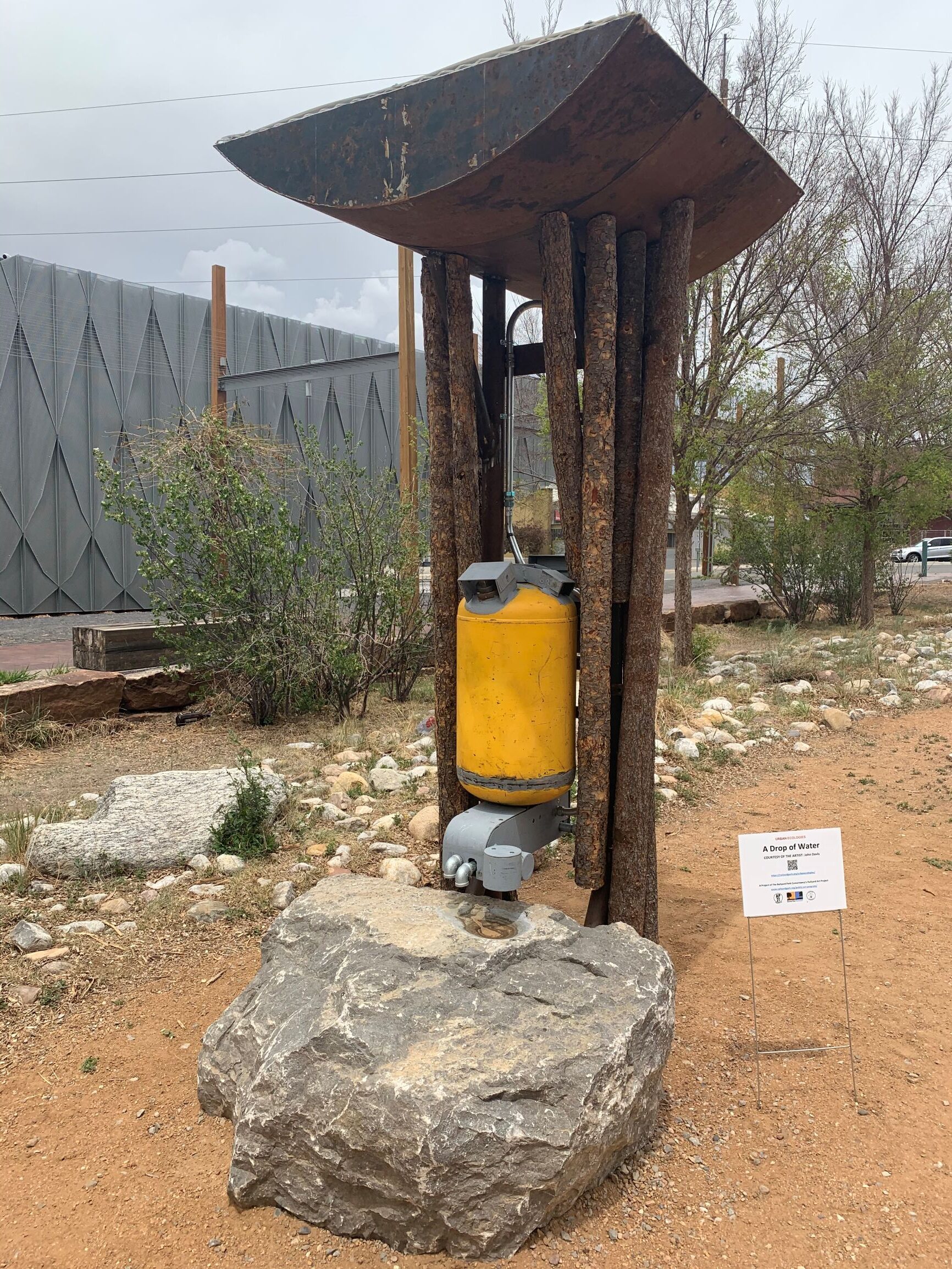
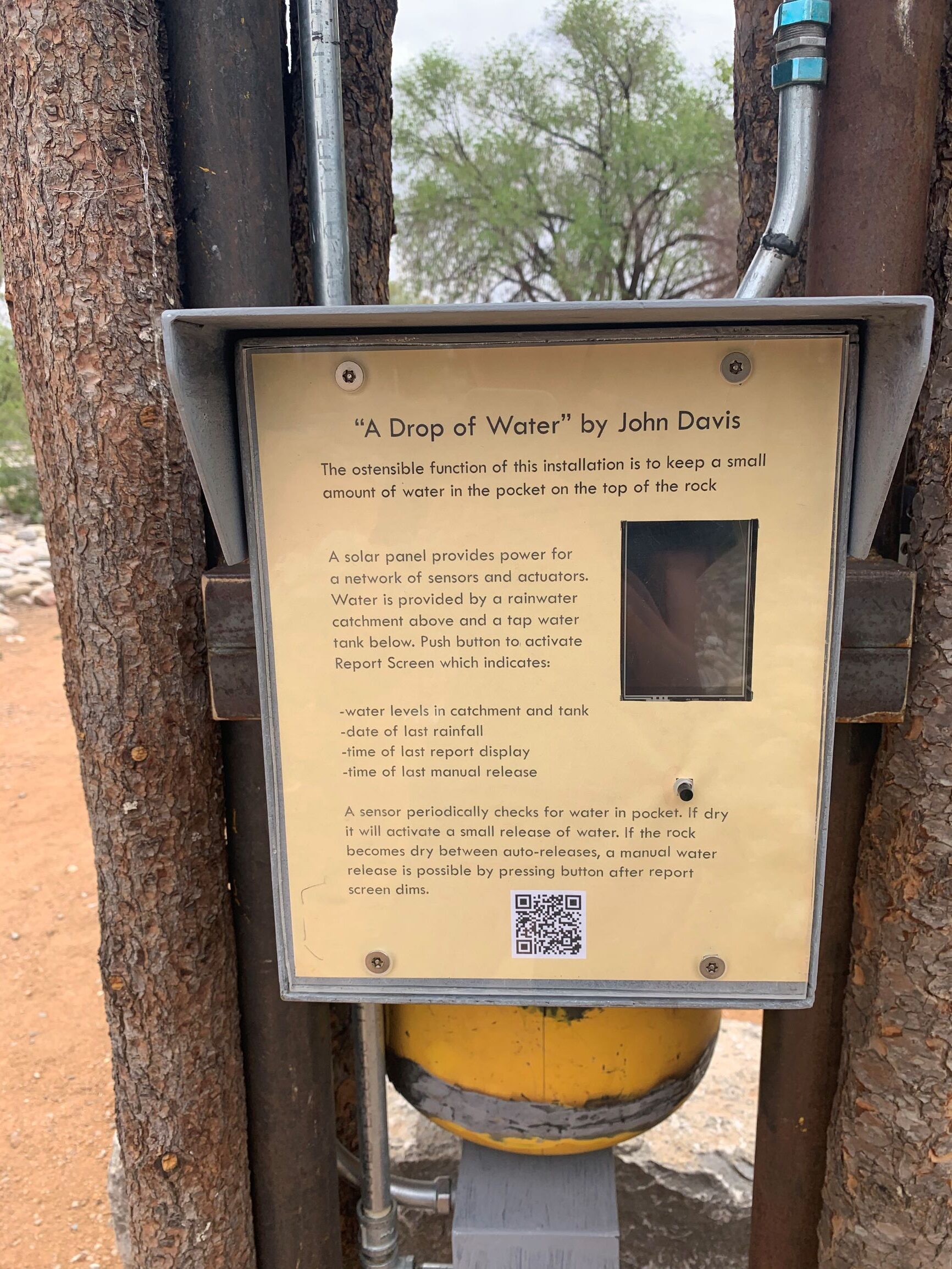
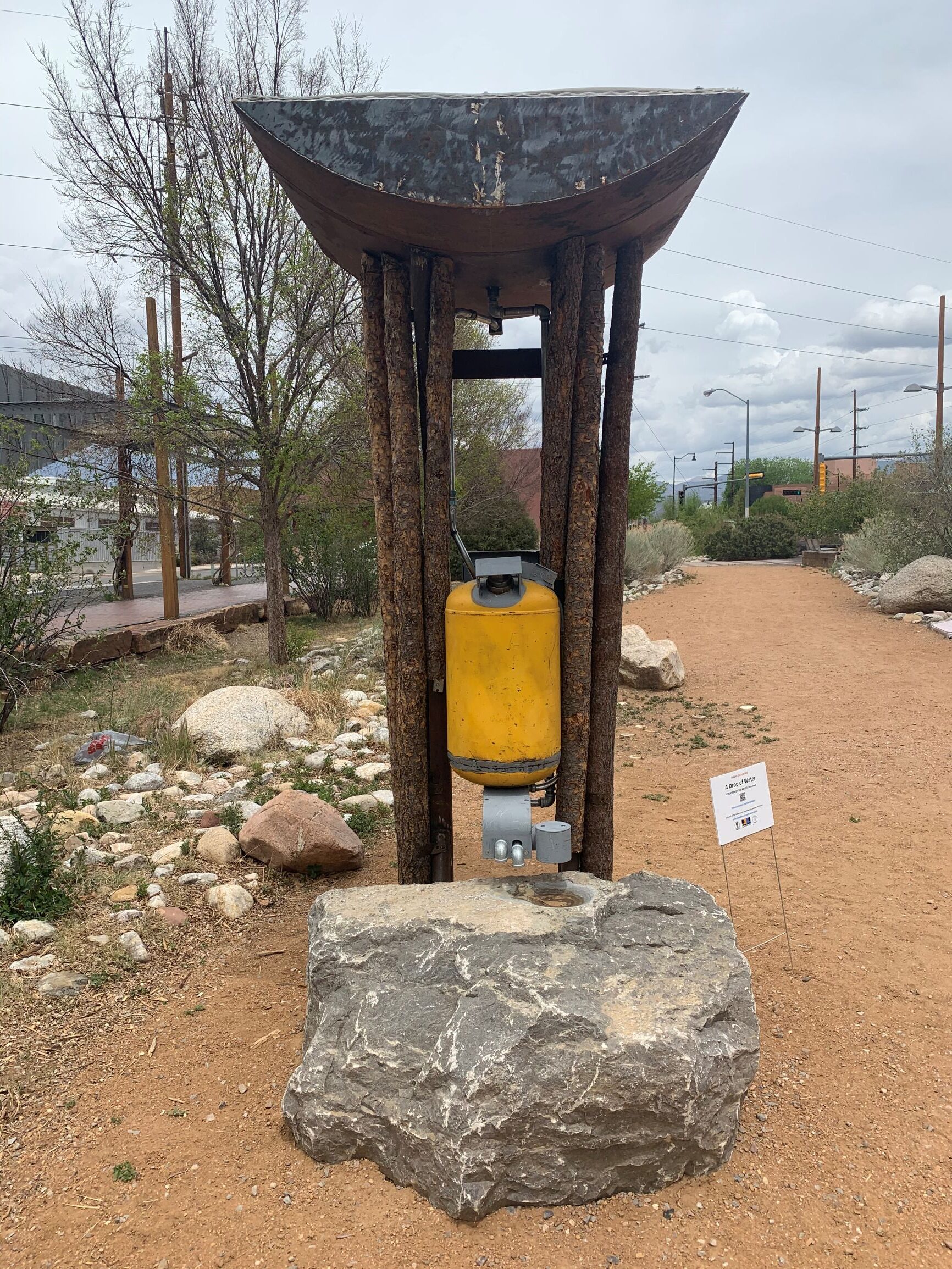
The ostensible function of this installation was to keep a small amount of water in a depression on the upper surface of a boulder. Adjacent to the boulder was a vertical construction which supported a small steel tank containing tap water and an open basin rain catchment. A solar panel provided power for a network of electrical devices – sensors, valves, actuators – that were managed by a microcontroller. Two ounces of water could be released from the catchment onto the boulder by the viewer by pressing a button on the Control Panel if rock was dry. On a regular schedule, a sensor mounted to the tap water tank checked the status of the pocket on the rock and, if it was dry, activated the release of two ounces of water onto the rock. This work responded to environmental conditions and its construction made use of salvage industrial materials as well as natural materials. These contrasting materials echoed a theme of urban ecology – technology and biology intertwined.
Industry
By Lance Ryan McGoldrick
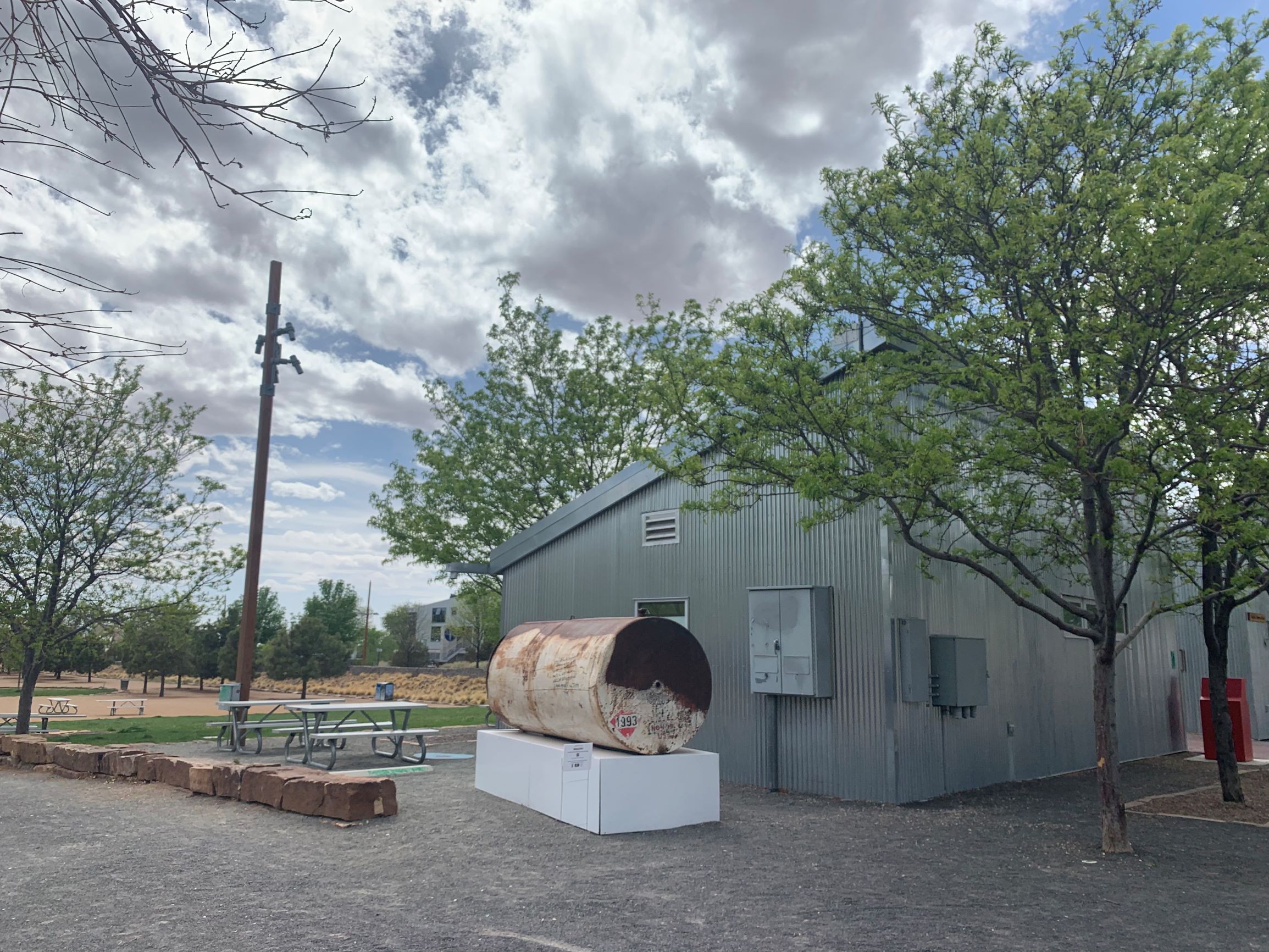
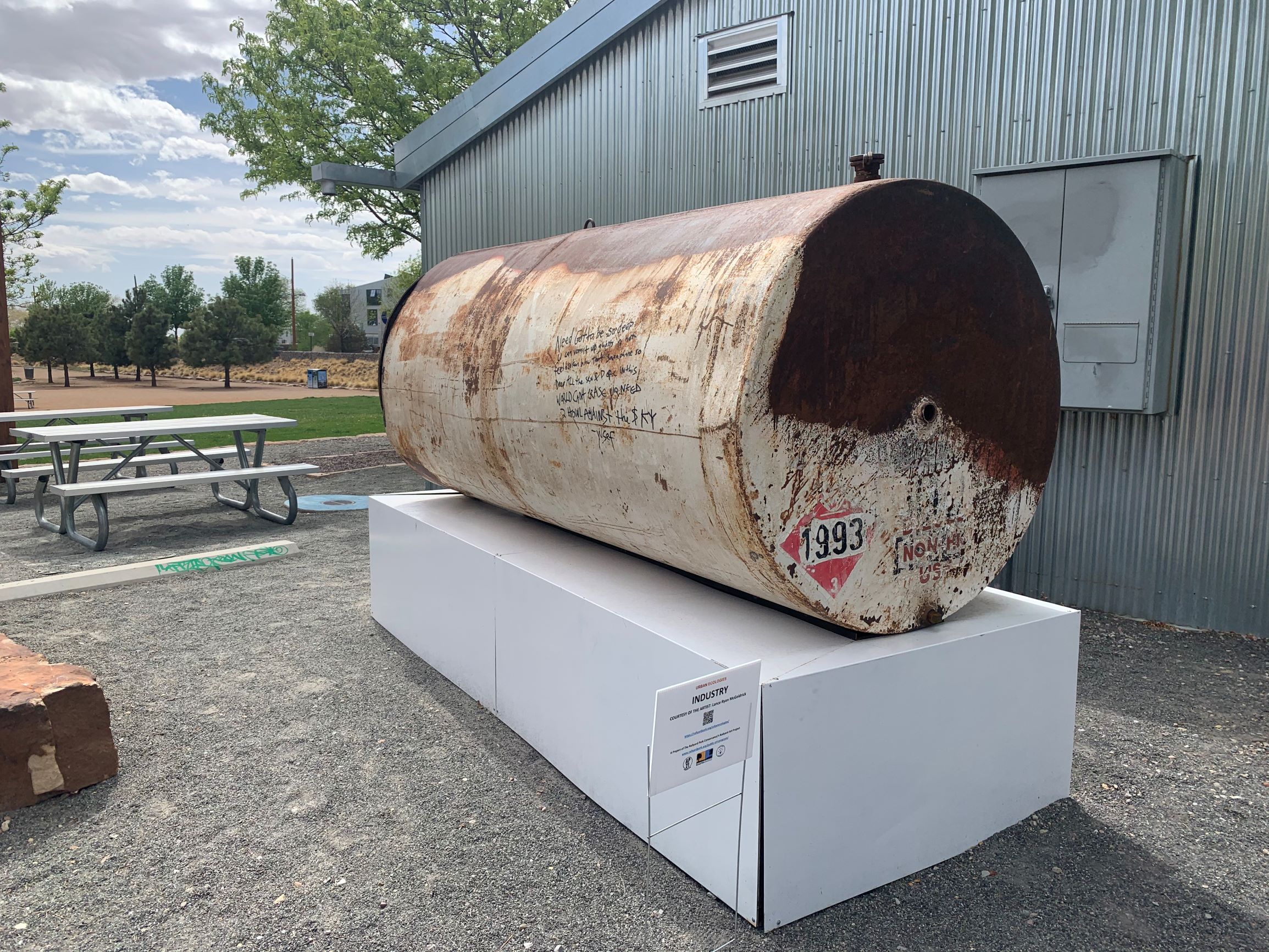
Industry was a multi-media installation that fused Art, Technology and Math. Contained inside the seemingly unaltered rusty water tank was a large-scale kaleidoscope, producing an illusion of a 3-D sphere. The piece incorporated coding, arduinos, LED’s, and an LCD monitor to produce the object cell, while geometry was used to create the illusion of a 3-D kaleidoscope. This installation was not mean to paint Industry in a negative light, but to encourage a dialogue on our societal values and norms. The juxtaposition of a “child’s toy” inside a mechanism of industry spoke to these values. Collectively we have lost our relationship with play, with Nature and discovery. Valuing industry over discovery, hard work over play, progress over the planet. After creating such a divisive and dangerous relationship with nature, how do we reflect, re-establish, and re-wild?
Rootwalk
By Hollis Moore
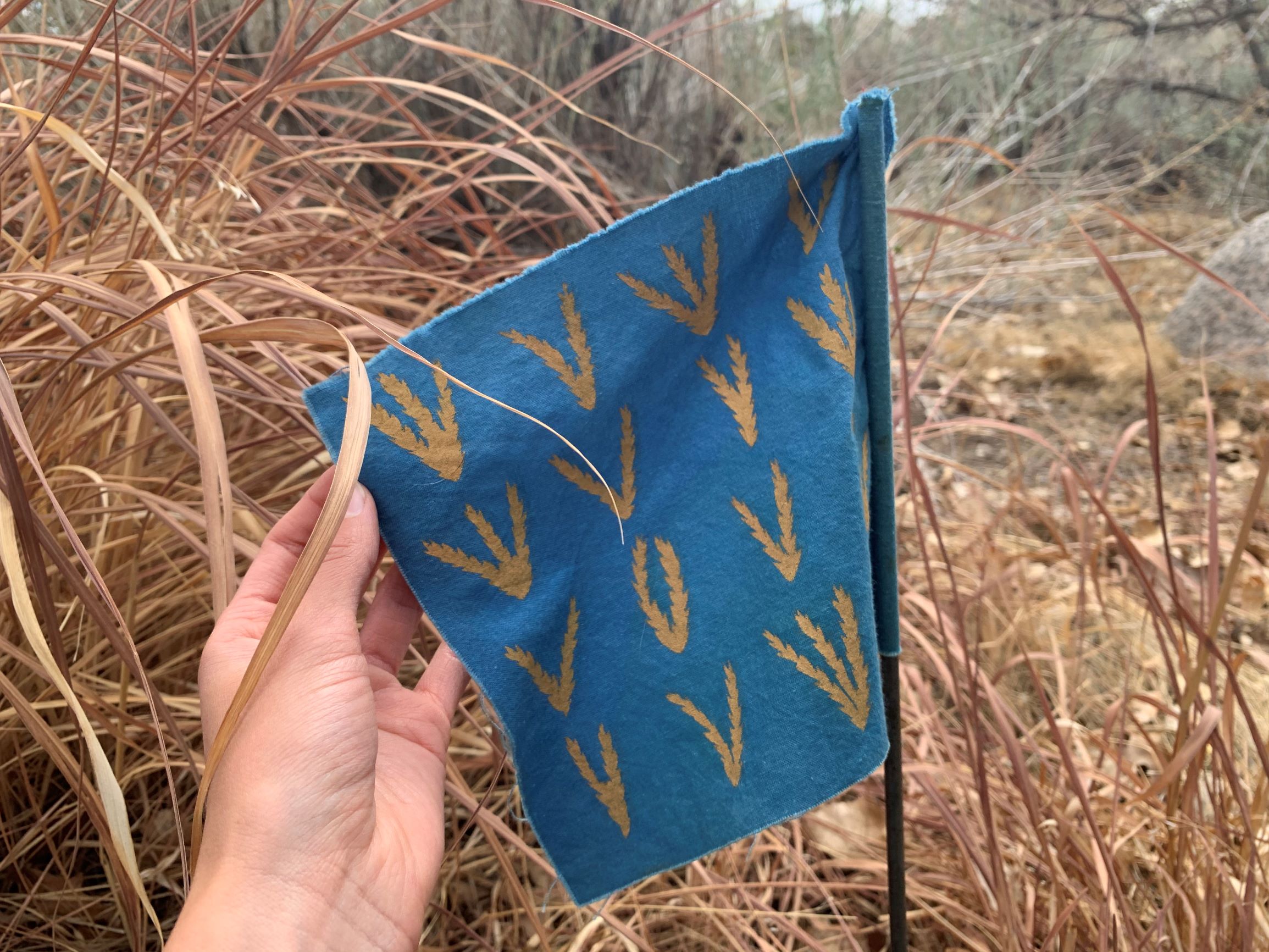
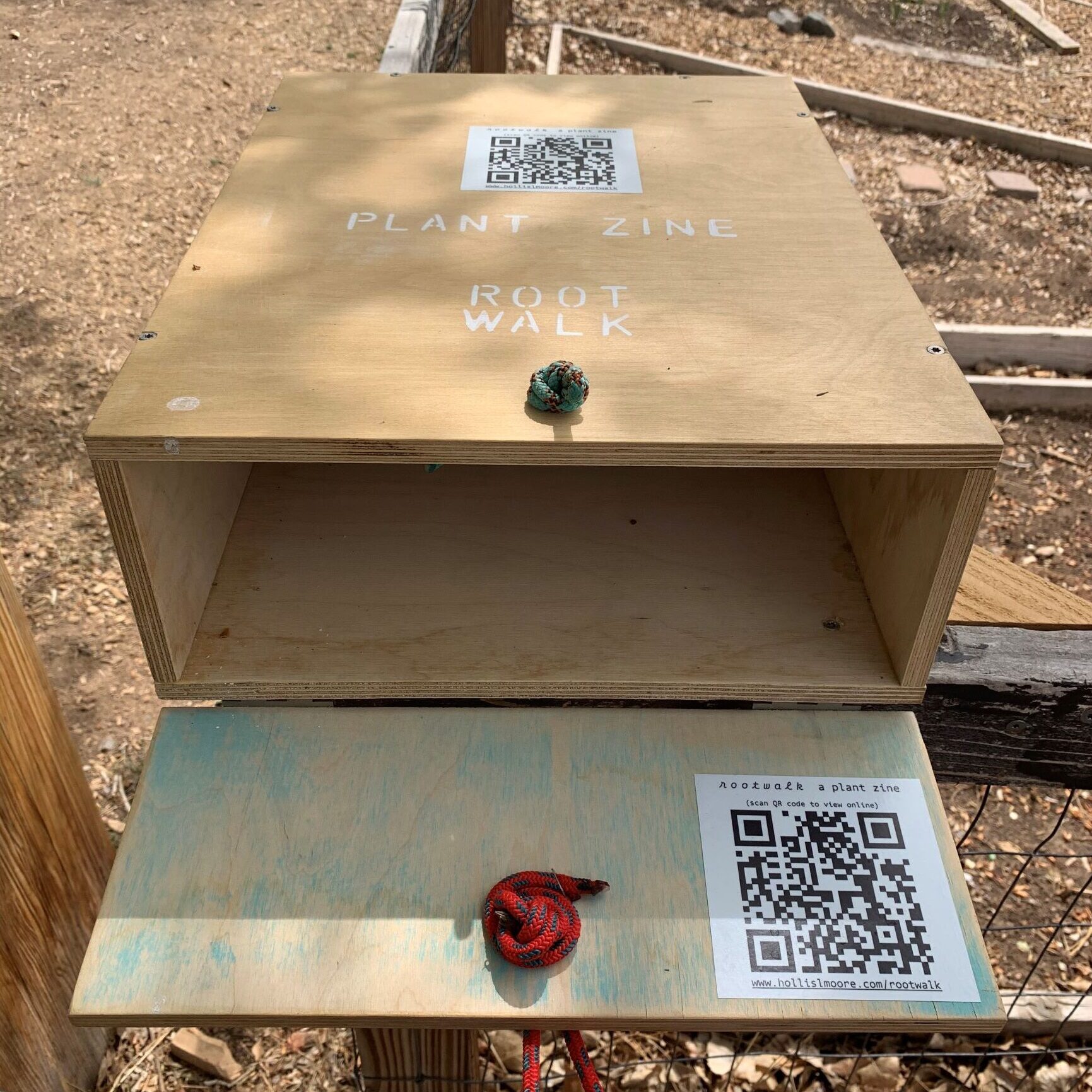
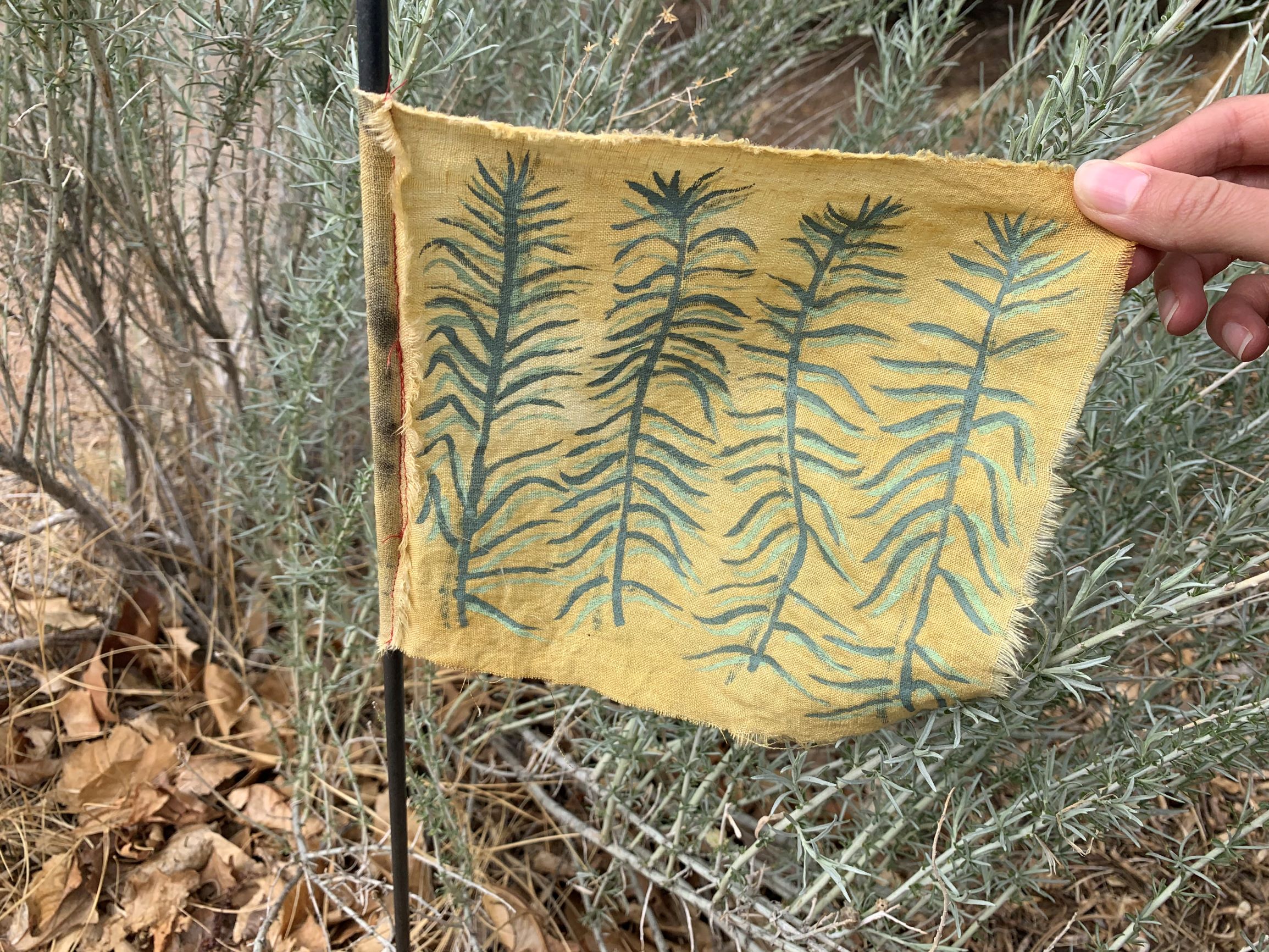
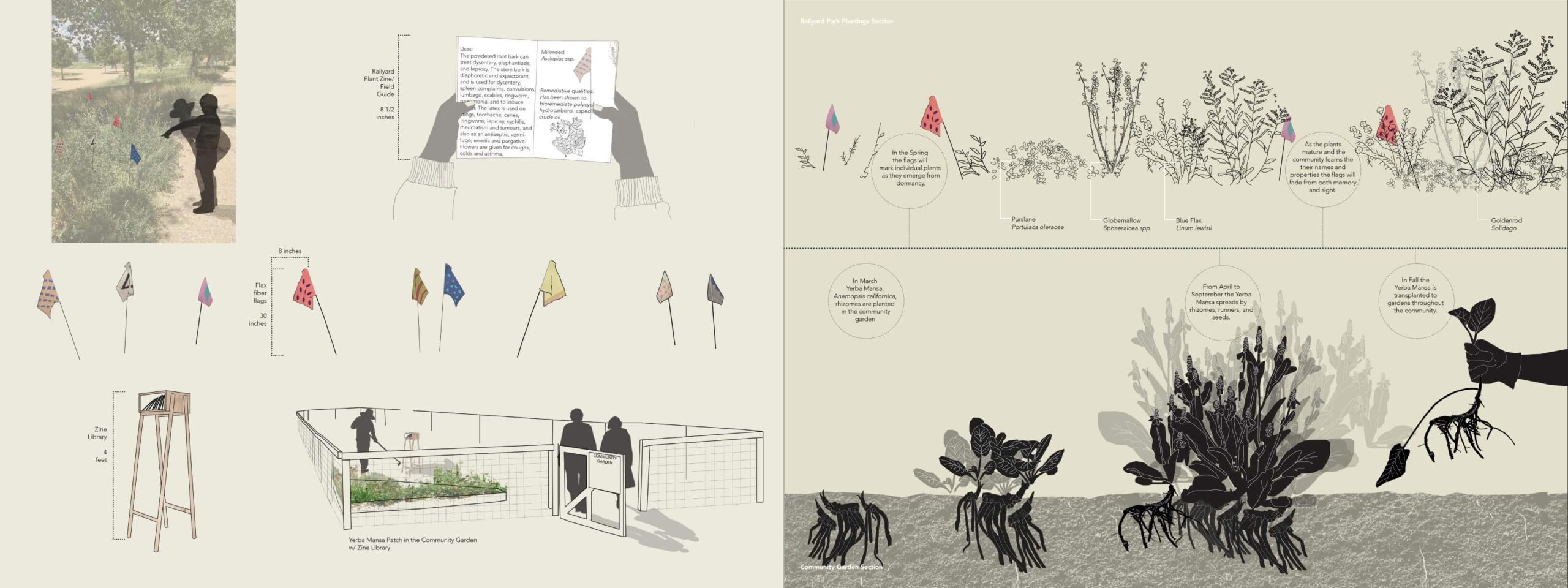
A patch of Yerba Mansa, Anemopsis californica, planted within the community garden was the core of the multifaceted installation, Rootwalk, which honored relations between people and plants. The community garden is a space of nurturing; plants, community, and oneself; through symbiotic plant-human relations. Yerba Mansa spread rhizomatically over the course of the installation, serving as a metaphor for sharing plant stories. The public was able to collect a zine/field guide from a library next to the Yerba Mansa patch. Dozens of community members contributed stories to the plant zine, and their descriptions prompted participants to meander through the park and learn the attributes of plant species. Flags, dyed with regional plants and printed with graphic symbols, signaled participants to various plants and the information in the zine/field guide. Over time the flags decomposed, emphasizing the need to pass along plant stories, knowledge, and seeds before their meaning is lost.
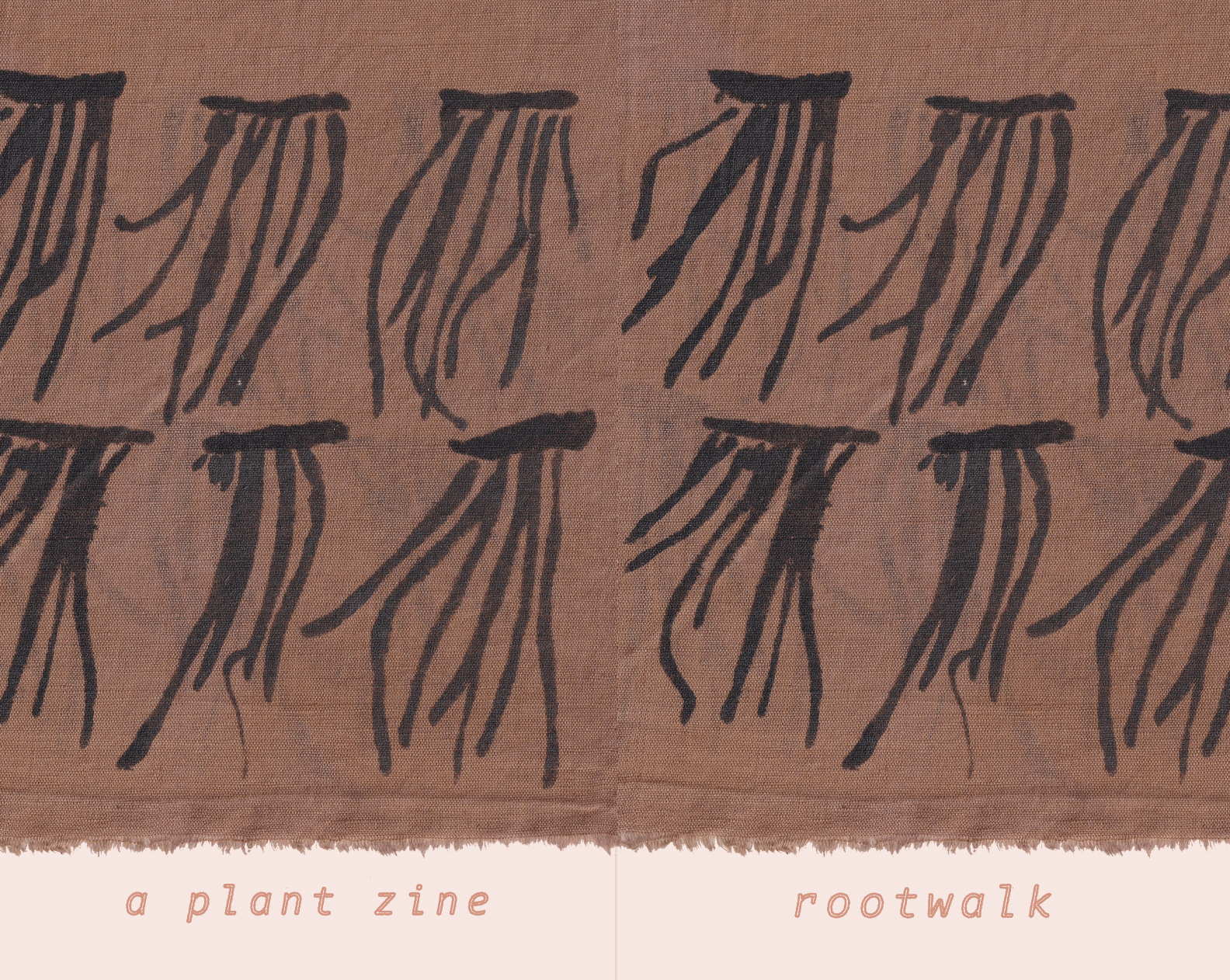
(not pictured)
By nicholas b jacobsen, Catherine Page Harris, and bug carlson
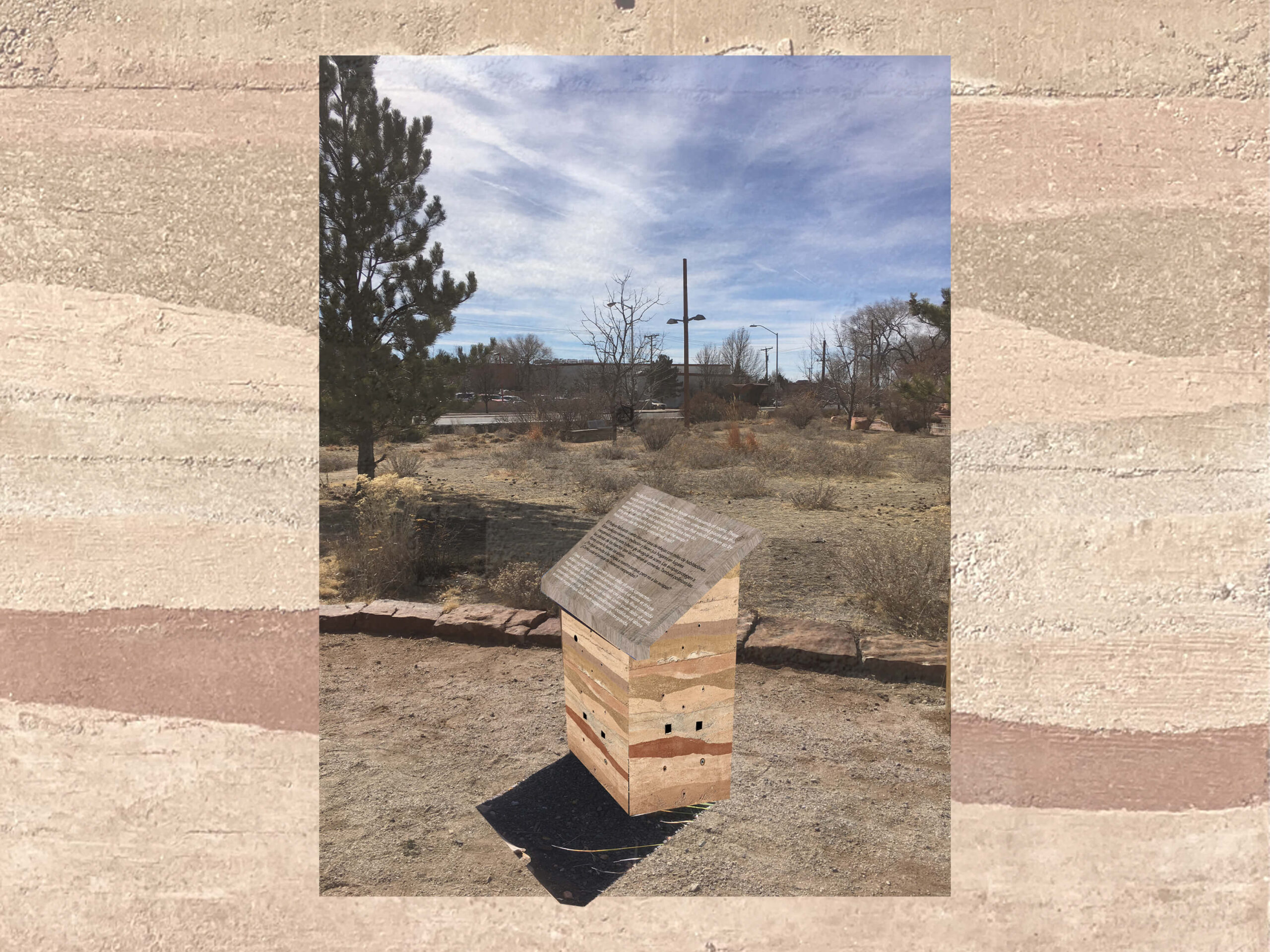
How can public space be annotated to account for the complicated pasts and presents of the Santa Fe Railyard Park? With earth plinth signs, (not pictured) endeavored to make visible that which is “not pictured” in our dominant culture. The signs encouraged visitors to engage with the often overlooked layers of material and social presents, pasts, and futures of the park. Each of the five etched steel signs evoked the park’s permanent signs that tell part of the park’s story. The earthen plinths embodied accounts of millennia of chemical change, soil degradation, layered histories, and riven and remade connections. The signs offered speculations in English, Spanish and another local language exploring multiple ways of being on this land of O’ghe P’oghe (aka Santa Fe), including a land acknowledgment which traced the colonial history of the railroad, its path of genocide across the so-called U.S., and the relationship of this settler park as land stolen from the Tewa people.
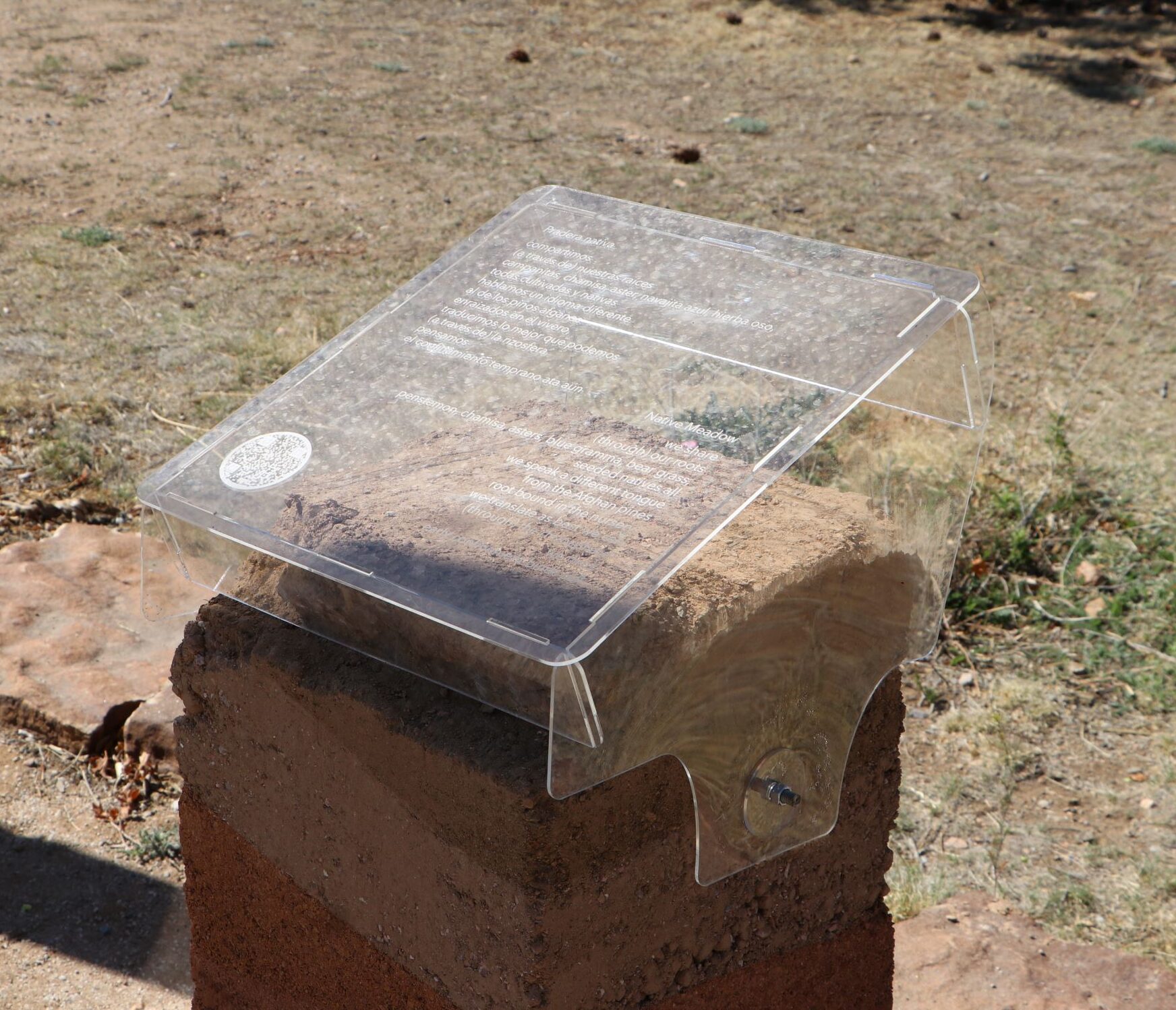
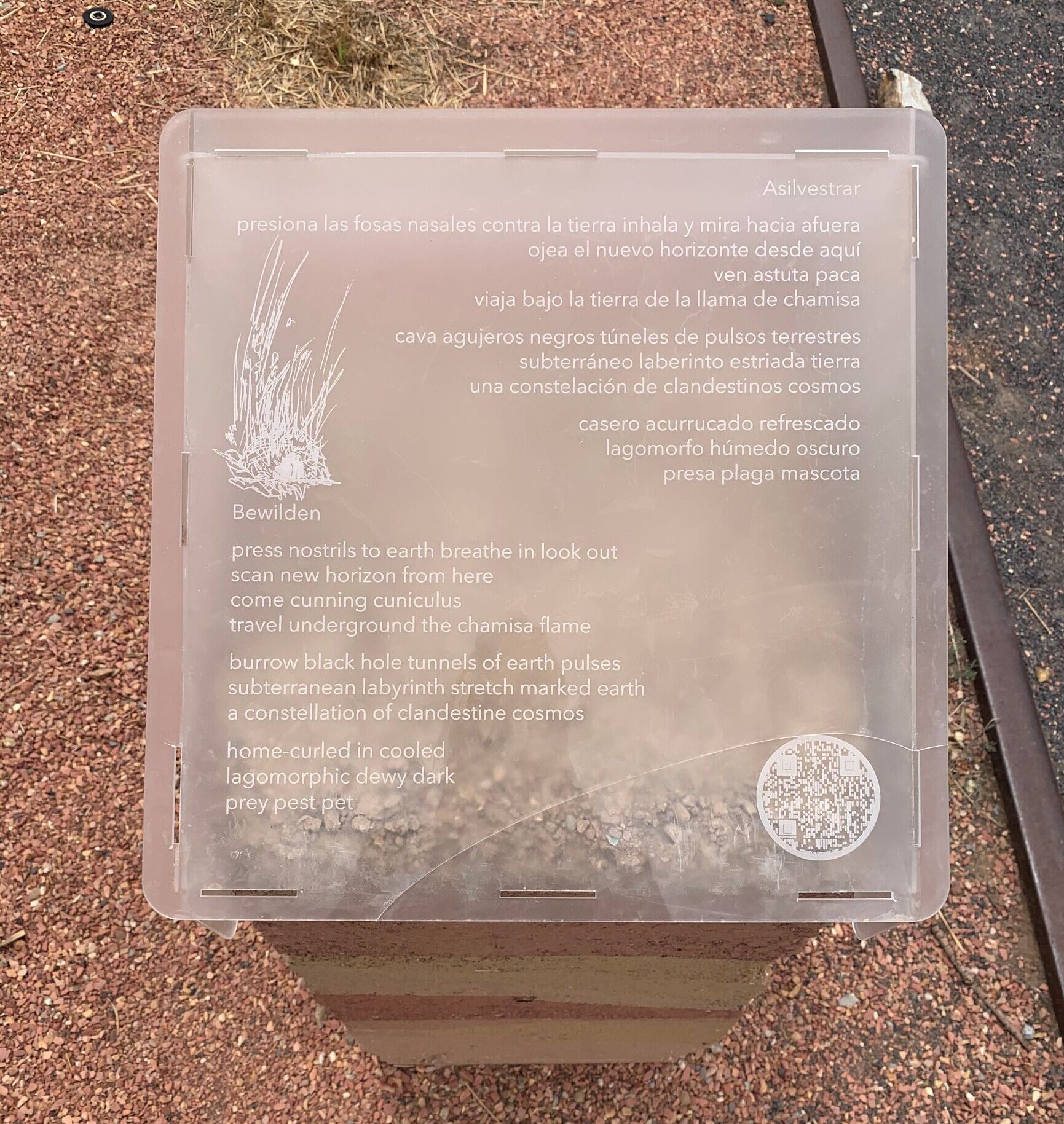
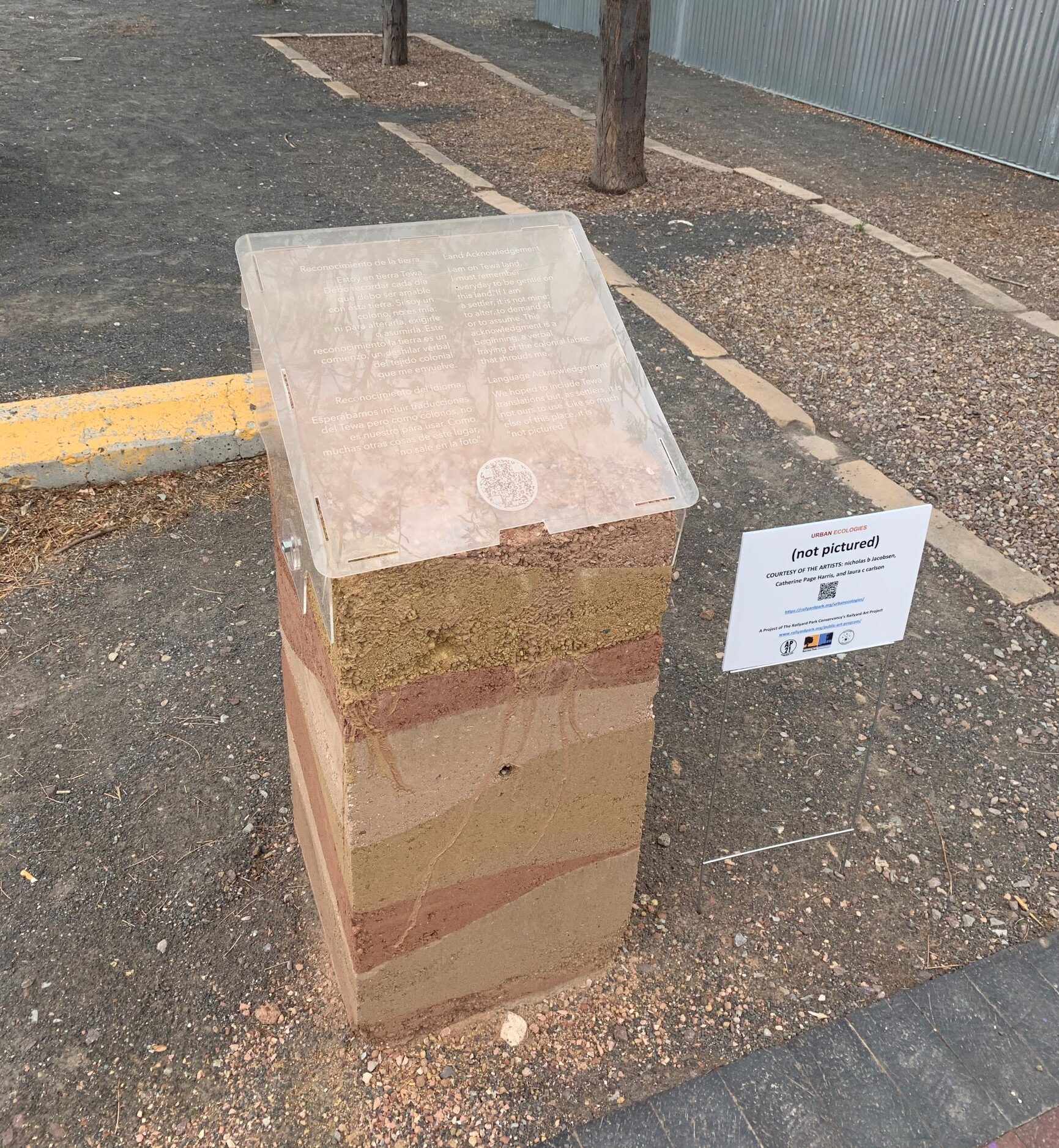
BROUGHT TO YOU BY

